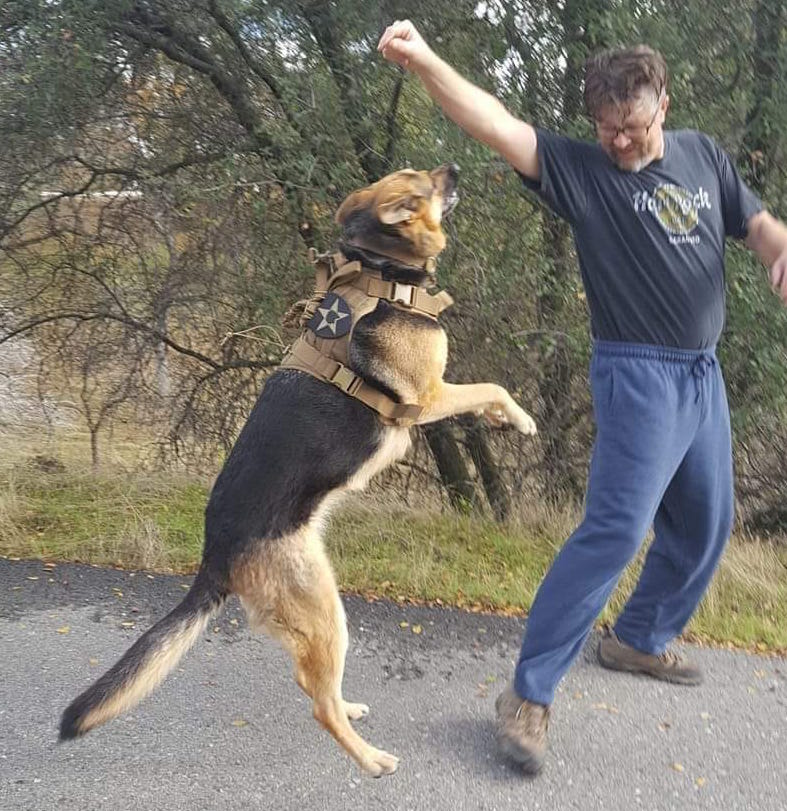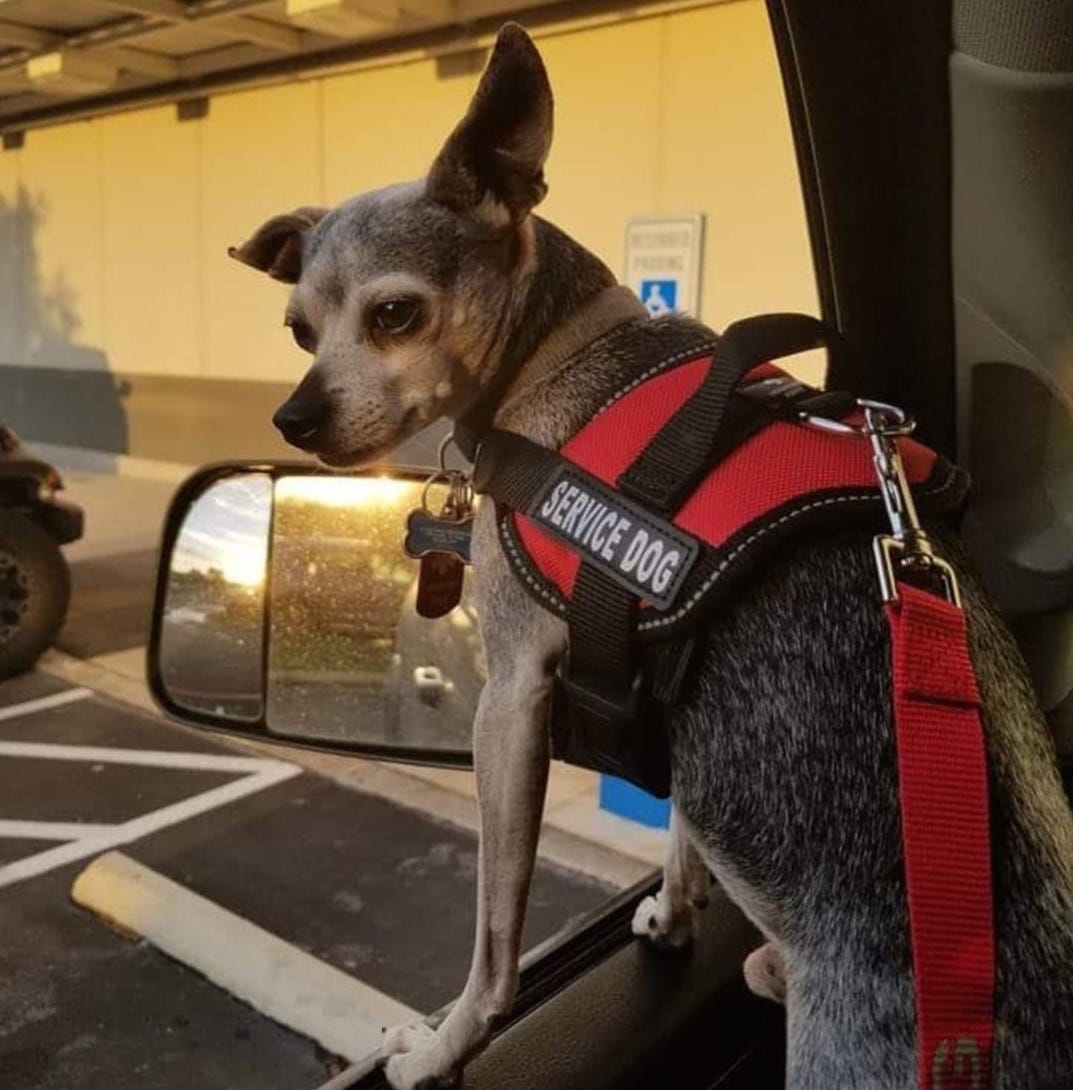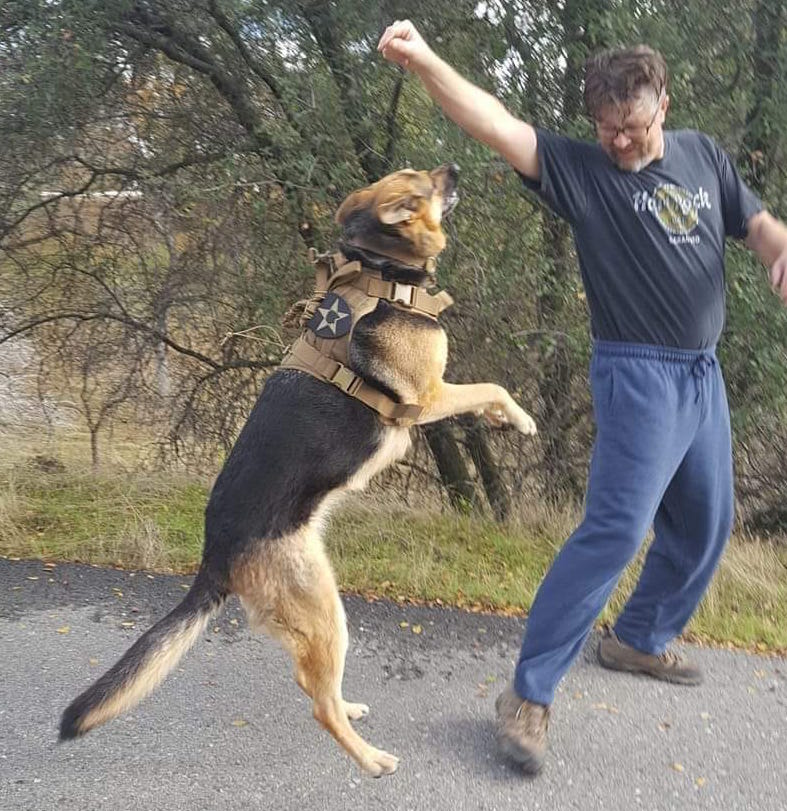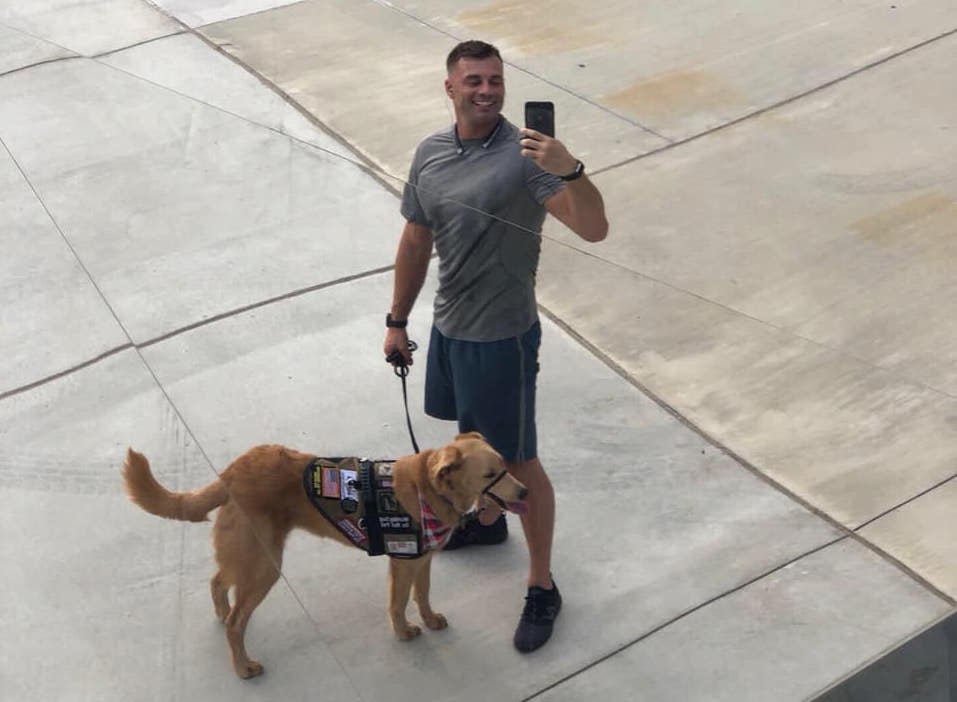Honoring Working Dogs for National Dog Day
Although we often view dogs as our furry friends, some dogs begin their lives with a predetermined goal in mind: to help others navigate their world.
August 29, 2019

What comes to mind when you think of your best friend? Perhaps someone who is loyal, accepting and fun to be around. Maybe a dog?
Although we often view dogs as our furry friends, some dogs begin their lives with a predetermined goal in mind: to help others navigate their world.
What is a Service Dog?
Service dogs are trained specifically to help people with disabilities like blindness, hearing impairments, mobile disabilities, etc. Because service dogs are trained for specific ailments, they are taught particular skills. For example, dogs that are trained to help humans with mobility issues may be instructed in item retrieval, opening doors, or stabilizing. There are also dogs trained to be someone’s eyes or ears. Medical alert dogs are trained to get help if their handler is in distress.
What is a Military Working Dog?
Military Working dogs go through rigorous training to become officers in the military. The U.S. military has about 2,500 active Military Working Dogs (MWDs) today, with 700 or so deployed at any one time. Each dog is trained for specific roles and assignments. They’re trained to attack, track, or detect bombs, gases, weapons, and drugs. They are also given handlers, or partners, that they work with for the entirety of their military careers.
What is an Emotional Support Dog?
Unlike service dogs or military working dogs, emotional support dogs are not required to perform specific tasks. They are meant solely to aid humans with emotional stability and unconditional love. Generally, they assist people with conditions such as anxiety, depression, bipolar disorder, etc. Any dog can become an emotional support dog with the referral of a doctor or medical professional and do not have to be professionally trained. Emotional support dogs are very important, especially for veterans with PTSD and wounded service members.
We recently asked our social media followers to share stories and pictures of their service dogs, military working dogs, or support dogs. Here are some of the responses we received.
Meet Maynard, Lola, Gypsy, Ole and Polar Bear
Maynard and Gypsy are emotional support dogs who help their veteran owners with PTSD. Emotional support dogs are often trained to provide simply the affection and comfort that someone may need 24/7. They can also be trained to protect.


Lola, unlike Maynard and Gypsy, is about to start the process of being trained to become a service dog. At only 8 weeks old, she’s a little too young, but in the next few weeks, her family will begin preparing for the training process.

Ole is a military working dog and is this service member’s coworker and “battle buddy.”

Polar Bear is a pretty special dog here at Soldiers’ Angels. Polar Bear’s handler, Chuck Ziegenfuss is one of the wounded veterans who inspired our Valor IT program. Chuck and Polar Bear now work with Hero Labradors, an organization that specializes in breeding labradors that go on to become service dogs.

What comes to mind when you think of your best friend? Perhaps someone who is loyal, accepting and fun to be around. Maybe a dog?
Although we often view dogs as our furry friends, some dogs begin their lives with a predetermined goal in mind: to help others navigate their world.
What is a Service Dog?
Service dogs are trained specifically to help people with disabilities like blindness, hearing impairments, mobile disabilities, etc. Because service dogs are trained for specific ailments, they are taught particular skills. For example, dogs that are trained to help humans with mobility issues may be instructed in item retrieval, opening doors, or stabilizing. There are also dogs trained to be someone’s eyes or ears. Medical alert dogs are trained to get help if their handler is in distress.
What is a Military Working Dog?
Military Working dogs go through rigorous training to become officers in the military. The U.S. military has about 2,500 active Military Working Dogs (MWDs) today, with 700 or so deployed at any one time. Each dog is trained for specific roles and assignments. They’re trained to attack, track, or detect bombs, gases, weapons, and drugs. They are also given handlers, or partners, that they work with for the entirety of their military careers.
Emotional Support Dogs
Unlike service dogs or military working dogs, emotional support dogs are not required to perform specific tasks. They are meant solely to aid humans with emotional stability and unconditional love. Generally, they assist people with conditions such as anxiety, depression, bipolar disorder, etc. Any dog can become an emotional support dog with the referral of a doctor or medical professional and do not have to be professionally trained. Emotional support dogs are very important, especially for veterans with PTSD and wounded service members.
We recently asked our social media followers to share stories and pictures of their service dogs, military working dogs, or support dogs. Here are some of the responses we received.
Meet Maynard, Lola, Gypsy, and Polar Bear
Maynard and Gypsy are emotional support dogs who help their veterans with PTSD. Emotional support dogs are often trained to provide simply the affection and comfort that someone may need 24/7.
Lola, unlike Maynard and Gypsy, is about to start the process of being trained to become a service dog. At only 8 weeks old, she’s a little too young, but in the next few weeks, her family will begin preparing for the training process.
Polar Bear is a pretty special dog here at Soldiers’ Angels. Polar Bear’s handler, Chuck Ziegenfuss is one of the wounded veterans who inspired our Valor IT program. Chuck and Polar Bear now work with Hero Labradors, an organization that specializes in breeding labradors that go on to become service dogs.


